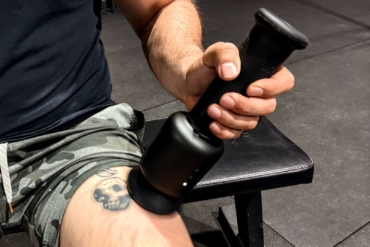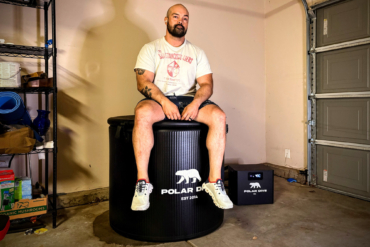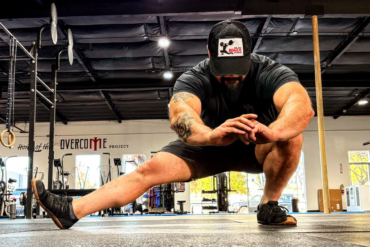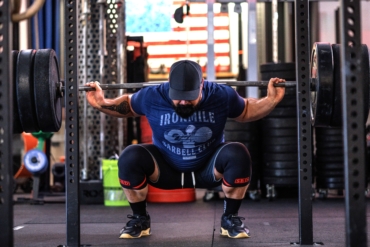A mixture of dynamic weight lifting, cardiovascular workout, and motion-specific functional exercises, Manic Training’s high-intensity interval training has garnered a following in one of the most fit towns in America. Here’s why.

Parallel on the floor, like two sleeping anacondas, I grab the ends of the long, heavy ropes and swing them one-by-one in diagonal uppercuts. Almost done with my first class at Manic Training, I am absolutely cooked: inhaling deeply, drenched from head to toe, experiencing muscle spasms and pushing through waves of nausea.
For a split second, I glance at the other athlete-filled interval stations—rowing machines zoom, Airdyne bikes blow, and barbells clang in the rectangular gym. I rotate 180-degrees to swing the thick ropes backwards, lighting my triceps on fire. A 60-second buzzer fills the gym and everyone jogs to the next station.
If I can push myself here, everything else—snowboarding, running, climbing—will become easier.
Training programs with unique variations of high-intensity interval training (HIIT) have swept across the country and the popularity is growing, according to the American College of Sports Medicine (ACSM). Aside from Manic Training, Orangetheory Fitness—a HIIT-inspired program that launched in 2010 in Fort Lauderdale, Florida—anticipates owning at least 500 locations by the end of 2016. Mountain Tactical Institute out of Jackson, Wyoming, offers programs specifically designed for mountain athletes. And CrossFit-affiliated gyms now exceed 10,000.
Broadly defined, a HIIT workout pushes athletes to perform at 80 – 95 percent of their estimated maximal heart rate (HR) for periods of five seconds to eight minutes, followed by recovery periods when the athlete is still working at 40 – 50 percent of their max HR, according to ACSM.
Training In Ski Town U.S.A.
Steamboat Springs, Colorado is recognized around the world as, Ski Town, U.S.A.—a reputation earned by hatching 88 winter Olympians to date, more than any other town in the U.S., comparable to 1 out of every 137 people competing amongst the world’s best. This 12,000-person mountain town is a year-round outdoor playground and the ideal home base for adventure sport athletes such as ultrarunner Donnie Haubert, mountain bike racer Alex Pond, and two-time Everest summitter Eric Meyer.
Other than playing at nearly 7,000 feet above sea level, these athletes all share one training component: Manic Training, which recently expanded with a fourth location in Denver’s Highlands Ranch neighborhood.
Manic Training: High Intensity Success
Graham “Bushy” Muir, Manic Training founder, was slightly nervous when he opened the inaugural gym’s 2,300-square-foot space in Steamboat, in 2009. The 60-minute classes aren’t a post-work happy hour. Rather than hosting traditional weight and cardio machines, Manic’s wide open room is outlined with training tools: sand bags, pull-up bars, kettlebells, medicine balls, rowing machines, ski ergs, boxes, and ropes. Each high-intensity workout starts with a heart-pumping 10-minute warm-up followed by an original, complex exercise sequence. Members never do the same exact workout twice.

Born in New Zealand, Graham moved to Steamboat to coach rugby following a two-decade career of coaching all over the world including Ireland, Australia, England, Chicago, and New Zealand. Graham’s Manic Training (which means ‘to train excitedly’) became known throughout Steamboat by word of mouth after Graham welcomed the town’s rugby team players and their families to train with him at his home garage. Slowly, the collective grew to include everyone from mothers losing weight to elite athletes.
Training ‘In The Zone’
As a coach, Graham’s central goal is to keep athletes’ minds “in the zone,” while providing a balance of strength and cardio training. Unyielding and evolving, the Manic routine keeps members engaged psychologically and they come back, year after year, including Seven Summits contender Kim Hess, who joined Manic over five years ago.

“It never gets easier. You think you’re in great shape and then Bushy throws something new out, or you go faster or lift more weight,” said 31-year-old Hess, who is motivated by the supportive atmosphere, which is much like the feeling of high school sports practice. Central to Manic Training, the coaching mentality and team environment is an element of training that non-Manic members can consider implementing into their own workout. Especially when athletes hit a wall or motivation wanes, as it can for anyone, a trainer or coach’s energy can reignite the fire.
In less than six years, Hess climbed Aconcagua, Mt. Elbrus, Mt. Kilimanjaro and Denali. This March, she’s tackling the world’s highest peak. She trains at Manic three times per week (the recommended amount, which allows for muscle recovery) and then “lives her everyday life, playing outside easily and often” including backcountry skiing, mountain biking, ice climbing, running, and yoga.
Last spring, when Hess was climbing Everest (she was halted by the earthquakes) she gained five pounds—“while not training at Manic”—and each of her teammates lost 15 – 25 pounds. Standing at 5’3” tall and 118 pounds, her International Mountain Guides team—which was comprised of climbers from Seattle, Barcelona, Canada, New York, and Park City—all wanted to know the secret behind her strength training.
“Manic has elevated my activity levels significantly,” Kim said, and without a huge time commitment, she added.
Integrated Strength Training
Alpine mountaineer Dr. Eric Meyer — an anesthesiologist with an interest in altitude medicine and exercise physiology — has been a Manic member for four years, trains two to four times weekly, and agrees with Hess. “Integrated strength training (which includes core work mixed with cardio and agility drills) makes my training more time and energy efficient,” he explained. Amongst Eric’s accomplishments, he’s stood 1,000 feet shy of K2’s summit, reached the 100-meter mark below the crown of Makalu, and has arrived atop Everest twice.
HIIT workouts can provide similar benefits as endurance training, but require less time. And an athlete’s caloric expenditure skyrockets between 6 – 15 percent. However, while HIIT training can complement training, it should not replace regular physical activity, which provides the most health benefits, outlines the ACSM. Furthermore, new HIIT students should first establish a foundational level of fitness—consistent 20 – 60-minute sessions of aerobic training, three to five times weekly, for at least several weeks—before joining a HIIT program, recommends the ACSM.
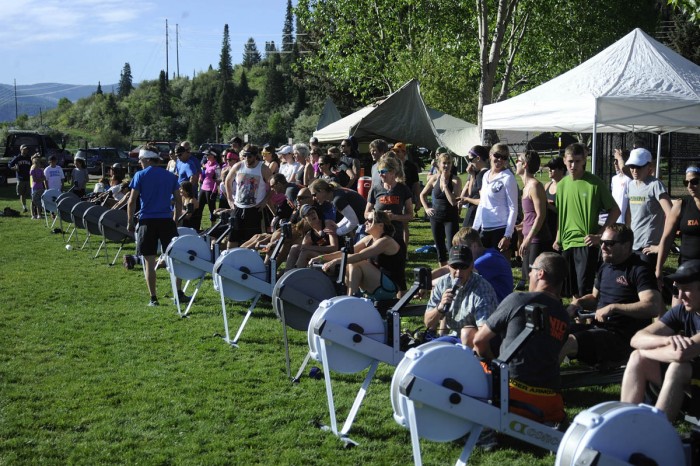
“My strength was better preserved and served my efforts better the second time,” Eric said of his 2013 Everest summit, for which Manic was his primary strength and cardio training, compared to the weight machines and barbells that he used to prepare for his first Everest trek in 2004. “Manic emphasizes posterior chain exercises that are designed to create explosive and dynamic strength,” which create core stability and decrease injury, Eric explained.
At the root of Manic, dynamic weight lifting — versus static weight training — is one staple that sets the program apart; any athlete can use this technique. While the latter training style is effective for gaining muscle, bursts of multi-plane exercises—like sand bag lifts and box jumps—prepare the body for non-static or sudden movement like climbing and everyday life scenarios from sledding with the kids to playing Frisbee with the dog or moving furniture.
“The program’s diverse exercises and balanced choreography is not just for the sake of challenge,” said Graham, who consults a core group of athletes to test and fine-tune each class—including X Games boardercross medalist Erin Simmons Nemec and Olympic moguls bronze medalist Nelson Carmichael, who are now both Manic trainers.
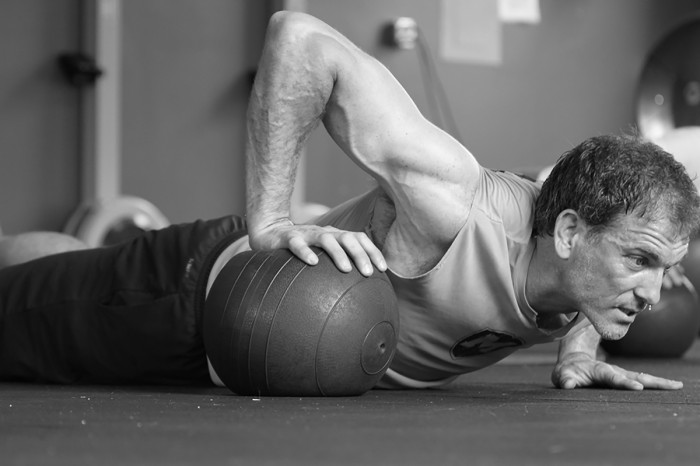
The workouts are also tailored to the season. For instance, the winter months incorporate more cardio heavy days, and the pre-ski season’s focus is leg strength and agility. “Whatever athletes are doing in their lives I want them to be able to go outside and be better at it, outside of Manic,” said Graham, like U.S. Snowboard team rider Mick Dierdorff, who’s strength, agility, and mental discipline have all improved since he incorporated Manic into his training, in 2009. “I earned my spot on the U.S. Snowboard team by placing 5th at the World Cup finals in Spain—I would not have been capable of that result without Manic,” Mick said.
Training For Weekend Warriors
However, Manic is not just for world-class competitors. Weekend warriors, stay-at-home parents, the weight-loss aimed, and even athletes recovering from injuries find Manic’s methods effective and achievable. Avid skier Steve Burns joined the Highlands Ranch location last December after surviving traumatic brain injury. In May 2014, he fell from a 30-foot cliff while ski mountaineering Huron Peak, one of Colorado’s 14,000-foot peaks. After a helicopter rescue, made by Flight For Life Colorado, Steve went into emergency brain surgery followed by a month-long coma and several months of hospitalization. With help from the National Sports Center for the Disabled, Steve rebuilt his strength for skiing, but Manic has accelerated the recovery of his coordination. Exercises such as two-footed box jumps—which he couldn’t do two months ago—Steve can now accomplish on 24-inch steps.
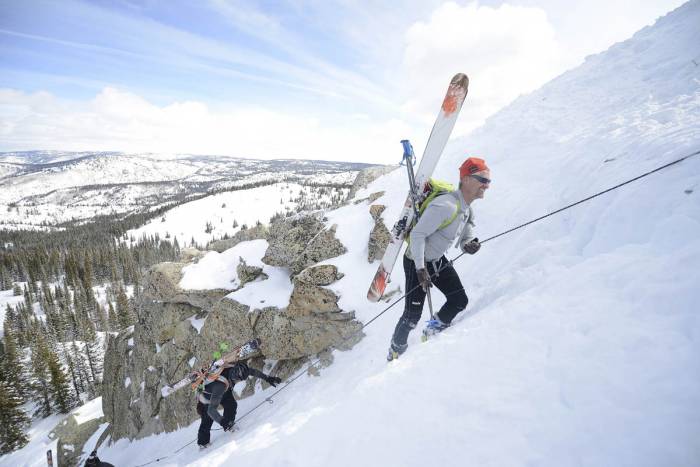
“The injury affected my speech, fatigue, balance, and coordination. A lot of that balance has come back, but the coordination is hard to train. Activities at Manic have really helped refine it again,” said Steve.
More than any other factor, any athlete needs to be willing to work hard in order to see results, regardless of their starting point, added Graham. Apparently, for an active lifestyle community and outdoor adventure athletes, the intensity of Manic is just right.
— Learn more about Manic Training

